- Home
- Ernest Hemingway
Dateline- Toronto Page 38
Dateline- Toronto Read online
Page 38
The audience cheered for eight minutes.
“I had never heard Lloyd George before,” Count Apponyi said. His eyes twinkled. “But he had heard me. It was a great pleasure to hear him. He was received with tremendous enthusiasm.”
The occasion referred to by Count Apponyi when Lloyd George had heard him speak was the famous presentation of the cause of Hungary that the count made at Paris during the peace conference, an appeal that has been unmatched for pathos and unrivaled eloquence.
Count Apponyi was met at the station by Col. J. B. Maclean, of Toronto, and Prof. Mavor, of Toronto University, who is an old friend of the Hungarian statesman. He was accompanied by his manager and friend, Dr. M. A. de Josika-Herezeg, Ph. D. His daughter, Countess Marika, is coming direct to Toronto from Newport and will arrive this evening. She will be the guest of Col. and Mrs. Maclean while stopping here.
Count Apponyi’s wife, who is a daughter of Count Mendorf and a cousin of His Majesty King George, did not come to Canada on this trip, but will be on his next trip to Canada.
Count Apponyi, who was in Toronto eleven years ago, speaks twice in Toronto today, at luncheon at the Empire Club, and at 8:30 this evening at the university. He will speak in English, one of the six languages he speaks with equal clarity and eloquence.
“I will speak in Canada at least once on the League of Nations,” Count Apponyi told the Star. “It may be tonight. I never know just exactly what I will say until I see the audience.”
Count Apponyi looks his age as you stand close to him. But [he] has a super-vitality. His white hair is close-cropped, his features huge, and through the wiry, white haze of his square-cut beard you see that his chin is really not prominent. In fact, it is rather receding than otherwise.
“I did not touch on the league in the States,” the count continued. “It is not a popular subject there. Yes, I am pro-league myself. And I want to talk not on its limitations, but on what it is able to accomplish.”
“How do you regard the present German crisis?” asked the Star.
“It is not for me to discuss the causes of that condition but unless something is done to check it there will be chaos.”
Count Apponyi was rolling down his sleeves, dressing in his room at the York Club before going out to speak. As he talked his accent grew clearer and less cloudy. He was in deadly earnest. “Unless something relieves the tension in Germany, chaos will come—and then perhaps Ludendorff.”
“You think there will be a return to the monarchy?” the Star questioned.
“No, not necessarily, but there will be the uniting of all the policies of despair. The despair will unite. It may be aid from Russia. Yet the statesmen of Europe seem to be blind to this.” Count Apponyi spread out his great, brown, freckled hands. “They seem to be blind to it all.”
“There is no present prospect of the restoration of the legitimate monarchy in Hungary,” Count Apponyi told the Star. “I saw the queen, who is in exile.”
“The Empress Zita?” suggested the Star.
Count Apponyi has spent a lifetime in the Magyar cause, often ranged against the Austro-Hungarian Empire.
“We prefer to call her the Queen Zita. She was only interested in educating her children. She was not thinking of any attempted restoration.”
“To you, an outsider,” smiled the count, “she is the ex-empress. To us she is the queen.”
Hungary has only two alternatives, according to Count Apponyi. To maintain the present government or to restore the legitimate monarchy. That is, the son of the late King Karl and Queen Zita, who is living on the Basque coast near San Sebastian.
“The people of Hungary are fundamentally opposed to the idea of a republic,” Count Apponyi stated.
“There is [a] great deal of talk sometimes that Admiral Horthy will be made king?” the Star said.
“It is absolutely impossible,” Count Apponyi said forcefully. “If there was ever a king, he would have to be of the legitimate monarchy. Imagine a king with only fifteen majority in the chamber. Pauf. The next week I might be in.” Count Apponyi smiled.
“Have you any official position now, Count?” asked the Star.
“None at all. I am a member of the opposition in a small way. But opposition is not a product for export. I believe the present government is doing its very best and if it gets the loan it may last a very long time. I would not overthrow it if the overthrowing rested with me. Because I have no better government to put in its place.”
Count Apponyi is in the position in speaking on Europe as a whole of having to speak most carefully.
“England has been most friendly to Hungary,” he said. “France has not been unfriendly. But, of course, she has her relations with the Little Entente. The Little Entente seems an integral part in her conception of world policy.
“When I talk today on the general situation in Europe I will not attempt to lay blame for the effects we have, but rather to tell what the conditions are and what remedies we have.”
Count Apponyi smiled his big, broad, deep-wrinkled, very wise smile.
“As I am only to speak for twenty minutes you see I must now work and select my themes very carefully. It is not as though one had three hours.”
Years ago popularity among all classes of Hungarians was a factor in Count Apponyi’s doing away with all headgear. In that way he eliminated the need of constantly doffing his hat for public appearances. He has resumed a hat, however, for his Canadian appearances.
Bullfighting a Tragedy
The Toronto Star Weekly
October 20, 1923
It was spring in Paris and everything looked just a little too beautiful. Mike and I decided to go to Spain. Strater drew us a fine map of Spain on the back of a menu of the Strix restaurant. On the same menu he wrote the name of a restaurant in Madrid where the specialty is young suckling pig roasted, the name of the pensione on the Via San Jerónimo where the bullfighters live, and sketched a plan showing where the Grecos are hung in the Prado.
Fully equipped with this menu and our old clothes, we started for Spain. Our objective—to see bullfights.
We left Paris one morning and got off the train at Madrid the next noon. We saw our first bullfight at 4:30 that afternoon. It took about two hours to get tickets. We finally got them from scalpers for twenty-five pesetas apiece. The bullring was entirely sold out. We had barrera seats. These, the scalper explained in Spanish and broken French, were the first row of the ringside, directly under the royal box, and immediately opposite where the bulls would come out.
We asked him if he didn’t have any less distinguished seats for somewhere around twelve pesetas, but he was sold out. So we paid the fifty pesetas for the two tickets, and with the tickets in our pockets sat out on the sidewalk in front of a big café near the Puerta del Sol. It was very exciting, sitting out in front of a café your first day in Spain with a ticket in your pocket that meant that rain or shine you were going to see a bullfight in an hour and a half. In fact, it was so exciting that we started out for the bullring on the outskirts of the city in about half an hour.
The bullring or Plaza de Toros was a big, tawny brick amphitheater standing at the end of a street in an open field. The yellow and red Spanish flag was floating over it. Carriages were driving up and people getting out of buses. There was a great crowd of beggars around the entrance. Men were selling water out of big terra-cotta water bottles. Kids sold fans, canes, roasted salted almonds in paper spills, fruit and slabs of ice cream. The crowd was gay and cheerful but all intent on pushing toward the entrance. Mounted civil guards with patent-leather cocked hats and carbines slung over their back sat their horses like statues, and the crowd flowed through.
Inside they all stood around in the bullring, talking and looking up in the grandstand at the girls in the boxes. Some of the men had field glasses in order to look better. We found our seats and the crowd began to leave the ring and get into the rows of concrete seats. The ring was circular—that sounds foolish, but
a boxing ring is square—with a sand floor. Around it was a red board fence—just high enough for a man to be able to vault over it. Between the board fence, which is called the barrera, and the first row of seats ran a narrow alleyway. Then came the seats which were just like a football stadium except that around the top ran a double circle of boxes.
Every seat in the amphitheater was full. The arena was cleared. Then on the far side of the arena out of the crowd, four heralds in medieval costume stood up and blew a blast on their trumpets. The band crashed out, and from the entrance on the far side of the ring four horsemen in black velvet with ruffs around their necks rode out into the white glare of the arena. The people on the sunny side were baking in the heat and fanning themselves. The whole sol side was a flicker of fans.
Behind the four horsemen came the procession of the bullfighters. They had been all formed in ranks in the entranceway ready to march out, and as the music started they came. In the front rank walked the three espadas, or toreros, who would have charge of the killing of the six bulls of the afternoon.
They came walking out in heavily brocaded yellow and black costumes, the familiar “toreador” suit, heavy with gold embroidery, cape, jacket, shirt and collar, knee breeches, pink stockings, and low pumps. Always at bullfights, afterward the incongruity of those pink stockings used to strike me. Just behind the three principals—and after your first bullfight you do not look at their costumes but their faces—marched the teams, or cuadrillas. They are dressed in the same way but not as gorgeously as the matadors.
Back of the teams ride the picadors. Big, heavy, brown-faced men in wide flat hats, carrying lances like long window poles. They are astride horses that make Spark Plug look as trim and sleek as a King’s Plate winner. Back of the pics come the gaily harnessed mule teams and the red-shirted monos, or bullring servants.
The bullfighters march in across the sand to the president’s box. They march with easy professional stride, swinging along, not in the least theatrical except for their clothes. They all have the easy grace and slight slouch of the professional athlete. From their faces they might be major league ball players. They salute the president’s box and then spread out along the barrera, exchanging their heavy brocaded capes for the fighting capes that have been laid along the red fence by the attendants.
We leaned forward over the barrera. Just below us the three matadors of the afternoon were leaning against the fence talking. One lighted a cigarette. He was a short, clear-skinned gypsy, Gitanillo, in a wonderful gold brocaded jacket, his short pigtail sticking out under his black cocked hat.
“He’s not very fancy,” a young man in a straw hat, with obviously American shoes, who sat on my left, said.
“But he sure knows bulls, that boy. He’s a great killer.”
“You’re an American, aren’t you?” asked Mike.
“Sure,” the boy grinned. “But I know this gang. That’s Gitanillo. You want to watch him. The kid with the chubby face is Chicuelo. They say he doesn’t really like bullfighting, but the town’s crazy about him. The one next to him is Villalta. He’s the great one.”
I had noticed Villalta. He was straight as a lance and walked like a young wolf. He was talking and smiling at a friend who leaned over the barrera. Upon his tanned cheekbone was a big patch of gauze held on with adhesive tape.
“He got gored last week at Málaga,” said the American.
The American, whom later we were to learn to know and love as the Gin Bottle King, because of a great feat of arms performed at an early hour of the morning with a container of Mr. Gordon’s celebrated product as his sole weapon in one of the four most dangerous situations I have ever seen, said: “The show’s going to begin.”
Out in the arena the picadors had galloped their decrepit horses around the ring, sitting straight and stiff in their rocking-chair saddles. Now all but three had ridden out of the ring. These three were huddled against the red painted fence of the barrera. Their horses backed against the fence, one eye bandaged, their lances at rest.
In rode two of the marshals in the velvet jackets and white ruffs. They galloped up to the president’s box, swerved and saluted, doffing their hats and bowing low. From the box an object came hurtling down. One of the marshals caught it in his plumed hat.
“The key to the bullpen,” said the Gin Bottle King.
The two horsemen whirled and rode across the arena. One of them tossed the key to a man in torero costume, they both saluted with a wave of their plumed hats, and had gone from the ring. The big gate was shut and bolted. There was no more entrance. The ring was complete.
The crowd had been shouting and yelling. Now it was dead silent. The man with the key stepped toward an iron-barred, low, red door and unlocked the great sliding bar. The door swung open. The man hid behind it. Inside it was dark.
Then, ducking his head as he came up out of the dark pen, a bull came into the arena. He came out all in a rush, big, black and white, weighing over a ton, and moving with a soft gallop. Just as he came out the sun seemed to dazzle him for an instant. He stood as though he were frozen, his great crest of muscle up, firmly planted, his eyes looking around, his horns pointed forward, black and white and sharp as porcupine quills. Then he charged. And as he charged, I suddenly saw what bullfighting is all about.
For the bull was absolutely unbelievable. He seemed like some great prehistoric animal, absolutely deadly and absolutely vicious. And he was silent. He charged silently and with a soft, galloping rush. When he turned he turned on his four feet like a cat. When he charged the first thing that caught his eye was the picador on one of the wretched horses. The picador dug his spurs into the horse and they galloped away. The bull came on in his rush, refused to be shaken off, and in full gallop crashed into the animal from the side, ignored the horse, drove one of his horns high into the thigh of the picador, and tore him, saddle and all, off the horse’s back.
The bull went on without pausing to worry the picador lying on the ground. The next picador was sitting on his horse braced to receive the shock of the charge, his lance ready. The bull hit him sideways on, and horse and rider went high up in the air in a kicking mass and fell across the bull’s back. As they came down the bull charged into them. The dough-faced kid, Chicuelo, vaulted over the fence, ran toward the bull and flapped his cape into the bull’s face. The bull charged the cape and Chicuelo dodged backward and had the bull clear in the arena.
Without an instant’s hesitation, the bull charged Chicuelo. The kid stood his ground, simply swung back on his heels and floated his cape like a ballet dancer’s skirt into the bull’s face as he passed.
“Olé!”—pronounced Oh-Lay!—roared the crowd.
The bull whirled and charged again. Without moving, Chicuelo repeated the performance. His legs rigid, just withdrawing his body from the rush of the bull’s horns and floating the cape out with that beautiful swing.
Again the crowd roared. The Kid did this seven times. Each time the bull missed him by inches. Each time he gave the bull a free shot at him. Each time the crowd roared. Then he flopped the cape once at the bull at the finish of a pass, swung it around behind him and walked away from the bull to the barrera.
“He’s the boy with the cape all right,” said the Gin Bottle King. “That swing he did with the cape’s called a veronica.”
The chubby-faced Kid who did not like bullfighting and had just done the seven wonderful veronicas was standing against the fence just below us. His face glistened with sweat in the sun but was almost expressionless. His eyes were looking out across the arena where the bull was standing making up his mind to charge a picador. He was studying the bull because a few minutes later it would be his duty to kill him, and once he went out with his thin, red-hilted sword and his piece of red cloth to kill the bull in the final set it would be him or the bull. There are no drawn battles in bullfighting.
I am not going to describe the rest of that afternoon in detail. It was the first bullfight I ever saw, but it was not
the best. The best was in the little town of Pamplona high up in the hills of Navarre, and came weeks later. Up in Pamplona, where they have held six days of bullfighting each year since A.D. 1126, and where the bulls race through the streets of the town each morning at six o’clock with half the town running ahead of them. Pamplona, where every man and boy in town is an amateur bullfighter and where there is an amateur fight each morning that is attended by 20,000 people in which the amateur fighters are all unarmed and there is a casualty list at least equal to a Dublin election. But Pamplona, with the best bullfight and the wild tale of the amateur fights, comes in the second chapter.
I am not going to apologize for bullfighting. It is a survival of the days of the Roman Colosseum. But it does need some explanation. Bullfighting is not a sport. It was never supposed to be. It is a tragedy. A very great tragedy. The tragedy is the death of the bull. It is played in three definite acts.
The Gin Bottle King—who, by the way, does not drink gin—told us a lot of this that first night as we sat in the upstairs room of the little restaurant that made a specialty of roast young suckling pig, roasted on an oak plank and served with a mushroom tortilla and vino rojo. The rest we learned later at the bullfighters’ pensione in the Via San Jerónimo, where one of the bullfighters had eyes exactly like a rattlesnake.
Much of it we learned in the sixteen fights we saw in different parts of Spain from San Sebastian to Granada.
At any rate bullfighting is not a sport. It is a tragedy, and it symbolizes the struggle between man and the beasts. There are usually six bulls to a fight. A fight is called a corrida de toros. Fighting bulls are bred like race-horses, some of the oldest breeding establishments being several hundred years old. A good bull is worth about $2,000. They are bred for speed, strength and viciousness. In other words a good fighting bull is an absolutely incorrigible bad bull.

 The Old Man and the Sea
The Old Man and the Sea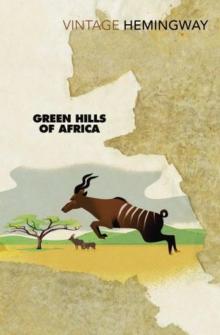 Green Hills of Africa
Green Hills of Africa The Sun Also Rises
The Sun Also Rises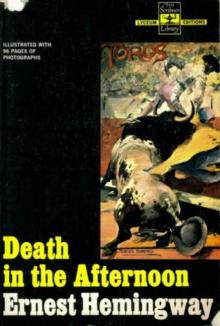 Death in the Afternoon
Death in the Afternoon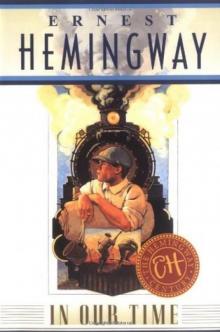 In Our Time
In Our Time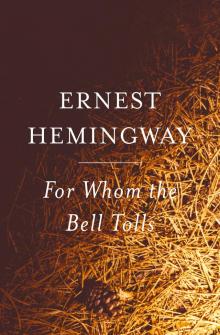 For Whom the Bell Tolls
For Whom the Bell Tolls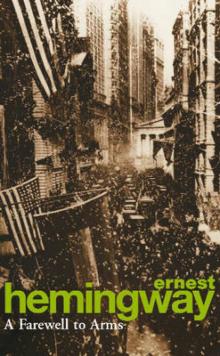 A Farewell to Arms
A Farewell to Arms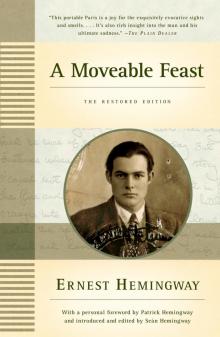 A Moveable Feast
A Moveable Feast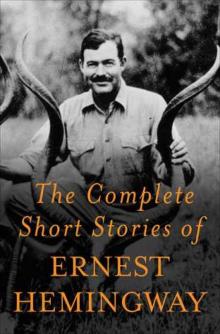 The Complete Short Stories of Ernest Hemingway
The Complete Short Stories of Ernest Hemingway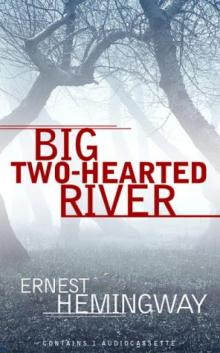 Big Two-Hearted River
Big Two-Hearted River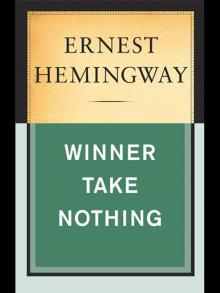 Winner Take Nothing
Winner Take Nothing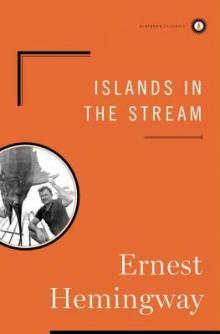 Islands in the Stream
Islands in the Stream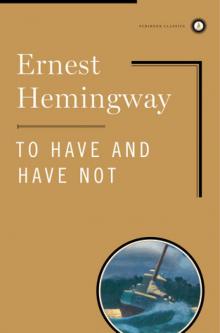 To Have and Have Not
To Have and Have Not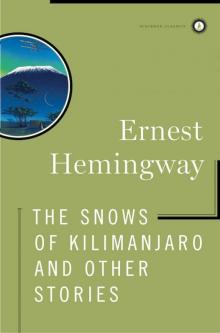 The Snows of Kilimanjaro and Other Stories
The Snows of Kilimanjaro and Other Stories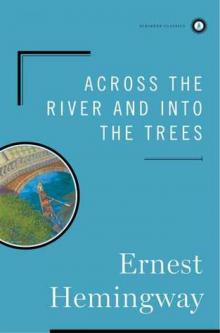 Across the River and Into the Trees
Across the River and Into the Trees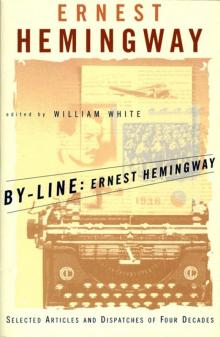 By-Line Ernest Hemingway
By-Line Ernest Hemingway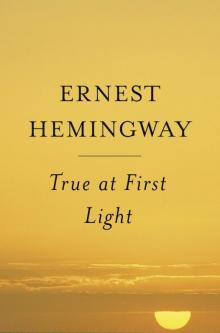 True at First Light
True at First Light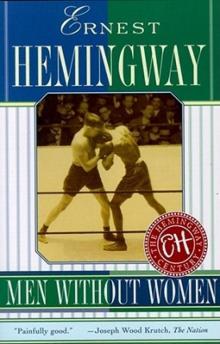 Men Without Women
Men Without Women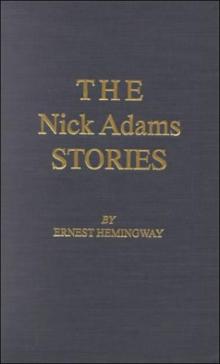 The Nick Adams Stories
The Nick Adams Stories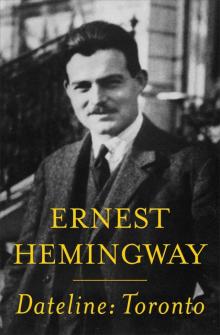 Dateline- Toronto
Dateline- Toronto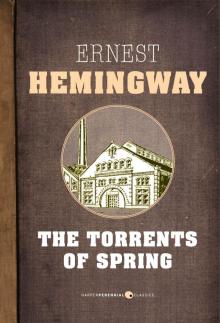 The Torrents of Spring
The Torrents of Spring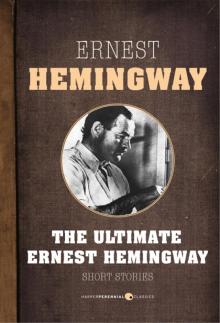 Short Stories
Short Stories